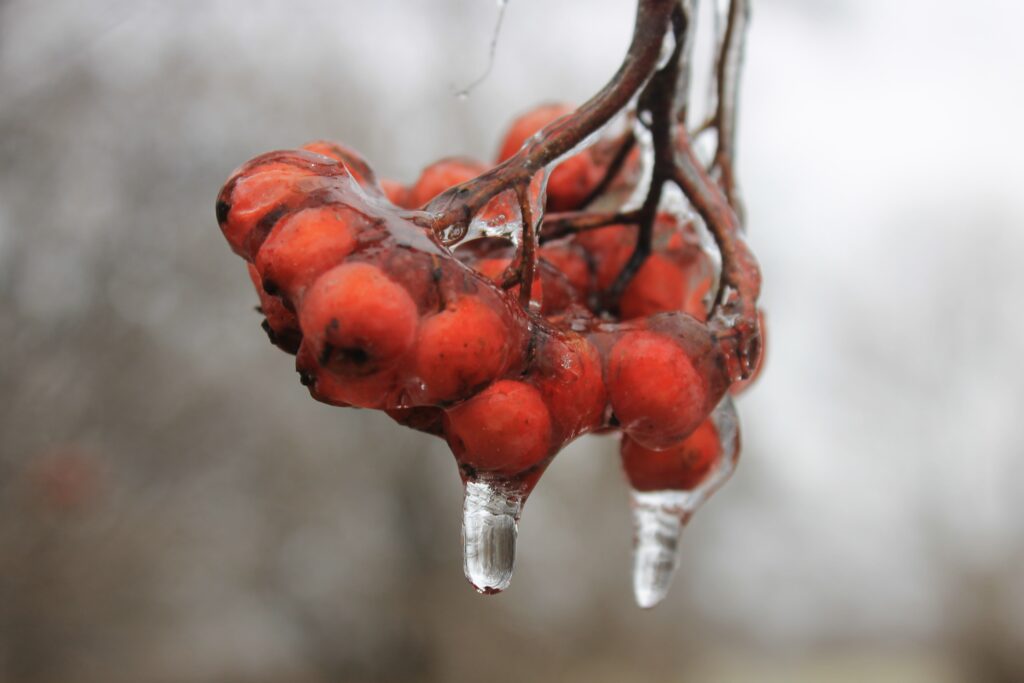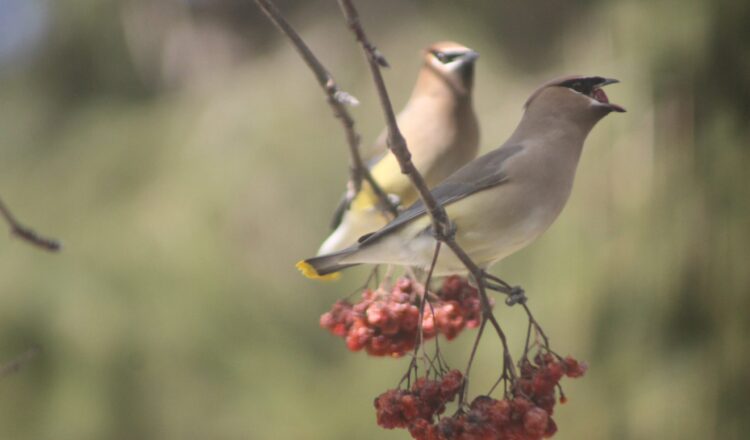By Bob Confer, pictured are a pair of Cedar Waxwings dining on the berries
The mountain ash is a small tree, reaching 25 feet in height on the most impressive specimens.
What it lacks in stature it makes up for in terms of its beauty and its importance to local wildlife.
As its name implies, the mountain ash (which is not an ash but rather kin of hawthorns and apples)
frequents mountains. Abundant in cooler climes and stony, yet rich soils of Ontario, Quebec, and Maine, we find that New York is at the southern edge of its range. Nonetheless, it can be found in good numbers across the Adirondacks and at some of the higher elevations of Allegany County.
You are more likely to encounter the European species of it in backyards and in the woodlots near them (the latter is where birds contribute to their planting through their droppings). It is an extremely popular ornamental, as many people plant them to accent the appearance of their yard. They are sold at a few nurseries and are also available on the cheap every spring through the annual sapling sales run by the state and various counties.

They have proven to be popular because of their small size and the showy fruits, found in large clusters, that last from September until March – or when songbirds consume them. The fruits on the American version are an intense red. The Eurasian version – also known as the Rowan tree – has orange fruits.
Those fruits aren’t poisonous, but that doesn’t mean you should make it a point to eat them. They aren’t especially flavorful. They are heavy in tannin, which gives black tea its flavor. Thus, the pulpy berries tend to be too bitter for consumption. Some folks counter that by making jellies and marmalades from the fruits while some adventurous souls make wine out of them. The most common use is as “dogberry” jam, which mixes these berries with apples and ginger. It’s a concoction found throughout the Canadian maritimes.
While most people won’t eat the berries, animals will – and they love them. Grosbeaks, cardinals, waxwings, and other berry-eating birds will browse on them during the winter. Deer will nibble at low-hanging berry clusters while turkeys and grouse will eat any that have fallen. In hard winters, birds are blessed to have access to this high-energy food. Mountain ashes have saved many a robin or bluebird that has spent the coldest months in Western New York.
It should be noted that especially at the tail end of gentle winters (sort of like the one we’re having now) many berries will remain since birds could easily find nutrition elsewhere. Those holdover berries contain an extra kick: If they’ve gone through a bunch of freeze/thaw cycles and linger in the warmth, they will ferment and birds that eat them will get drunk! Drunken birds will fly erratically, miss perching branches, and slowly fly into things. Every so often you’ll catch national news stories of flocks of birds exhibiting this “strange” behavior.
You should consider mountain ash as an addition to your backyard. I am a big fan of growing trees and shrubs that are natural to the area and/or contribute to the health of local wildlife. This lovely tree certainly fits the bill.






